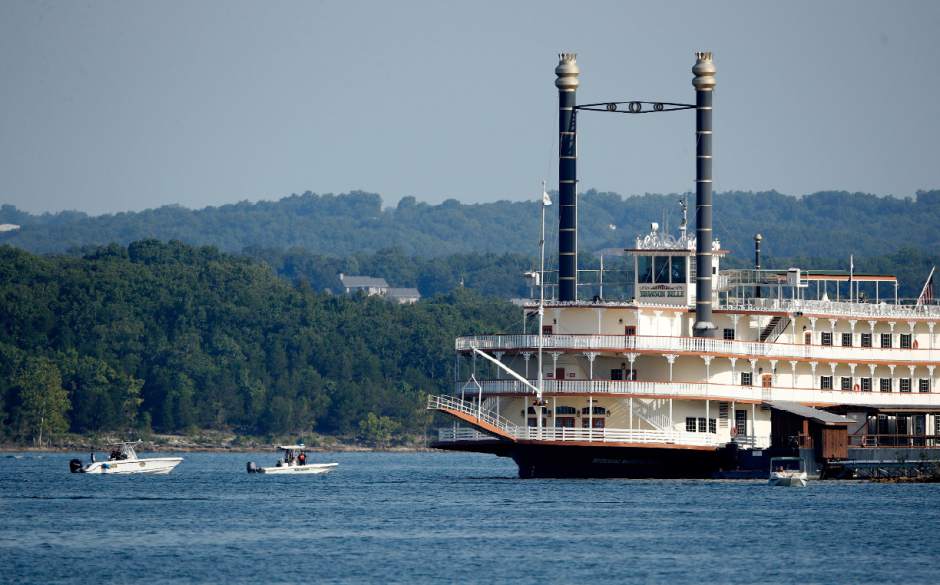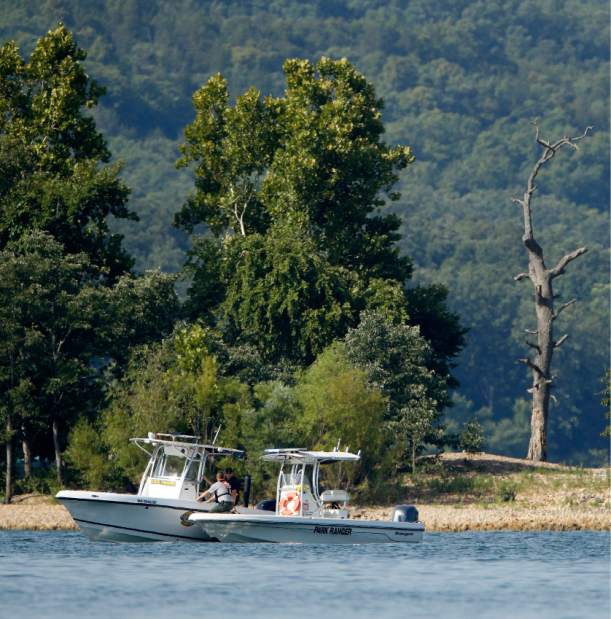NTSB warned about danger of duck boat canopies before Missouri tragedy
The two biggest mass casualties on water involving duck boats in the last 20 years featured crafts with overhead roof canopies that a federal agency said posed a drowning risk to passengers trying to escape from a sinking vessel.
Thursday’s sinking of a duck boat on choppy waters at Table Rock Lake in southwest Missouri that killed 17 passengers bears similarities to a 1999 lake disaster in Arkansas.
In 1999, the Miss Majestic duck boat rapidly sank to the bottom of Lake Hamilton, Ark., drowning 13 of its 21 passengers.
When investigators recovered the boat, they found seven dead passengers still inside — four of them pinned against the underside of the canopy, which made the prospects for an escape unlikely.
The National Transportation Safety Board investigated the Arkansas incident and arrived at this conclusion: “Contributing to the high loss of life was a continuous canopy roof that entrapped passengers within the sinking vehicle.”
A witness video from Table Rock Lake shows a Ride The Ducks boat, covered with an overhead roof, proving no match against 3-foot waves and 60 mph winds before capsizing. The boat takes on the long and narrow shape of a bus with a canopy that offers seemingly little room for passengers to escape.
“It’s sort of like getting out of an airplane,” Robert Mongeluzzi, a Philadelphia attorney who has brought lawsuits against duck boat operators, told The Star early Friday morning. “This is not an open-sided boat where everybody can just pitch themselves over the side readily.”
Experts say the presence of a canopy or other coverings on duck boats, which ride low to the water, creates undue difficulty for passengers trying to escape if the vessel sinks below the surface, whether they have life preservers or not.
“The problem with canopies is that if you are wearing your life preserver and there is a canopy and the boat capsizes then, the floatation device will take you up in the canopy, pinning you inside the vessel,” Mongeluzzi said. “If you don’t wear your life preserver, then you don’t have the floatation to get to the surface if the boat sinks.”
Thursday’s incident is the latest in a string of high-profile deaths involving duck boats, originally designed for military use in World War II. Distinctive for their ability to travel on water or on land, they have since become vehicles used on lake tours.
Since the 1999 Miss Majestic catastrophe, incidents involving duck boats have killed people on land and water in cities ranging from Seattle to Philadelphia.
Ride The Ducks, which court records indicate originated in Branson before developing a national profile, has been involved in some of these incidents. In 2016, the company abandoned its operations in Philadelphia after two separate incidents resulted in three deaths.
Much of Thursday’s duck boat incident was captured on an eyewitness video, which showed two duck boats fighting helplessly against a storm and cutting out just as one started sinking.
Those watching gasped in shock throughout the nearly five-minute video.
TROUBLED HISTORY OF DUCK BOATS
Ride The Ducks got its start in Branson, according to court records. In 2001, it partnered with privately held themed entertainment company Herschend Family Entertainment to gain broader exposure.
Ride The Ducks would open in Philadelphia, and a year later, Herschend Family Entertainment would become Ride The Ducks’ sole owner. Herschend Family Entertainment was founded by Jack and Pete Herschend, the creators of Silver Dollar City in the Ozarks.
In 2010, Hungarian tourists Dora Schwendtner and Szabolcs Prem took a ride on a Ride The Ducks boat in Philadelphia. As the boat entered the water, the engine overheated and its operator dropped an anchor in the middle of a commercial shipping channel.
A shipping barge struck the duck boat, pushing portions of it underneath the surface of the Delaware River. Schwendtner and Prem drowned as a result.
In 2015, 68-year-old Philadelphia resident Elizabeth Karnicki was walking across an intersection when she was crushed to death by a Ride The Ducks boat traveling on land.
Karnicki’s husband sued the company, claiming that the duck boats have massive blind spots, causing its operators to not see pedestrians. The case later settled.
“They kill on land and they kill on the sea,” said Mongeluzzi, the Philadelphia attorney who represented Karnicki and the Hungarian tourists. “We have repeatedly called for duck boats to be banned.”


